So you have just began knitting and want to learn to cast on, or you want to learn to knit cast on using beads, perhaps your pattern calls for some more advanced casting on techniques such as a loop cast on or a tubular cast on. Whatever cast on method you are looking for you are sure to find it here!
An extensive list of tutorials regarding various different cast on methods from beginners to advanced techniques.
Casting On
Learn to make a slip loop, a single cast on and the two-needle method.
Click here for tutorial
Long Tail Cast On
With long tail cast on you make the foundation row AND knit the first row at the same time. In other words, long tail casting-on produces a uniform row of loops already pre-knit into the underlying foundation row. These loops and the foundation row stabilize one another.
Click here for tutorial
Backwards Cable Cast On
This cast on method is useful for placing thumb holes, button holes, and any other holes necessary while working in the round.
Click here for tutorial.
Double Cast On / Long-Tail Cast On
This cast-on is the one that most people learn first. It is important not to make your cast-on too tight – not only because it makes your first row harder to work, but also because it will make the starting edge of the fabric tight and inelastic. Many people prefer to cast-on over both needles in order to assure a nice, loose cast-on row.
This cast-on makes a “right side” row: if you will be working in stockinette, it is easiest to work a purl row first after this cast on is complete.
Click here for tutorial
Provisional Cast On: Chained Cast-On
A provisional cast-on is a way to make a temporary cast-on.
Click here for tutorial
Disappearing Loop Cast-On
Starting in the middle opens up a world of possibilities – pentagons, octagons, umpteen-a-gons, not to mention spheres and eggs and octopi and all manner of seamless toys. But how exactly do you get started?
Click here for tutorial
Disappearing Loop Cast-On – Casting on from the middle.
* There is no slip knot, so there is no hard nub in the middle of your work.
* The first stitches are not crocheted, so they are not larger and heavier than the rest of the work.
Click here for tutorial
Simple Ring Beginning for Circular Shawls
This is a pictorial representation of Emily Ocker’s Cast On, used to start a piece of circular knitting (like a tablecloth, shawl or dishcloth) in the middle. The magical thing is that after knitting a few rounds, you can pull on the loose yarn end to close the hole in the center.
Click here for tutorial
Cast On with Beads
This is a type of technique used to join 2 balls of yarn. Most projects involve using more
than 1 ball of yarn. The 2 balls can be joined in the middle of any row.
Click here for tutorial
Braided Cast On
This cast on creates a lovely braided effect that is stunning on mittens or hats. It’s perfect for two color knitting, no need to fumble to add the second colour, it’s already there! And it sets up your stitches perfectly for corrugated ribbing!
Click here for tutorial
Casting on additional stitches at the end of a row by the loop cast-on method
A trick for casting on (adding) stitches at the end of a row, or over a gap, such as over a peasant thumb on a sock, or over a pocket opening, or over a buttonhole.
Click here for tutorial
Tubular Cast On Without The Waste
Tubular cast-on the Italian way is done without the extra yarn in contrasting color. It’s no better or worse than the way it’s done in the US. The result is identical: only the process differs. I like it because there is no unnecessary waste and you don’t have to worry about finding a sacrificial yarn in the same weight, but different color.
Click here for tutorial
Provisional Tail Method of 1 x 1 Tubular Cast On
Like all tubular casting on, this method creates a springy edge–as springy as if an elastic were inserted–and has a pleasant-feeling rounded edge which stands up well to wear and looks well.
Click here for tutorial
Tubular Cast on for 2×2 rib (includes video)
If you have worked a tubular cast on for 1×1 rib before the chances are that you used a variation on the stocking stitch method, it seems to be the most common. You can also work a tubular cast on for 2×2 rib using any of the other methods for 1×1 rib and rearrange the stitches.
Click here for tutorial
Open – a.k.a. Provisional Cast On
This method of casting on uses a length of waste yarn that is removed later to reveal “live” stitches, which are then placed back on the needle and knit in the opposite direction. This can be useful for hems or for making an object that’s closed at both ends — like a knitted, stuffed toy.
Click here for tutorial
I Cord Cast On
A visual I cord cast on tutorial.
Click here for tutorial
Knit On, Purl On – Cast On
This cast on method works almost exactly like knitting or purling. The technique is particularly useful when you need to add stitches to a work in progress.
Click here for tutorial
Turkish Cast-On
The Turkish Cast-On is an invisible cast on that forms a closed end. It is perfect for things like sock toes, mittens, glove fingers, pouches and purses.
Click here for tutorial
Cable Cast On Tutorial
A Cable Cast On is a good way to cast on stitches in the middle of your knitting. Often a pattern asks you to be knitting along and then says, cast on some number of stitches. I almost always use a Cable Cast On in that situation.
Click here for tutorial
Judy’s Magic Cast-On
The world needed a better way, a more humane way to start toe-up socks, so I developed Judy’s Magic Cast-On. It’s an easy to learn, fast method that starts at the very end of the toe and works the first time, every time. It’s completely invisible from both sides, and it can be used with almost any toe-up sock pattern.
Click here for tutorial
Twisted German Cast-On
I love two-color/corrugated ribbing but it has a tendency to curl and the floats from the second color can peek out below the cast on edge. The Twisted German Cast On is a little thicker than other cast ons which helps with floats showing and best of all it doesn’t curl at all. The Twisted German Cast On also is very loose which is handy if you need a really stretchy cast on for socks for wider calves or ankles.
Click here for tutorial

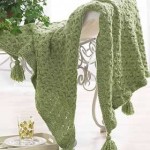
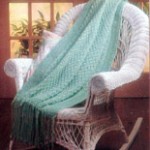
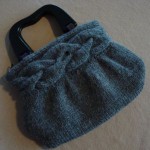
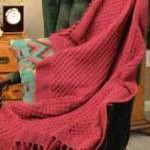
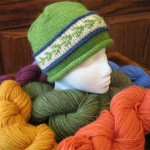
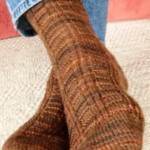

Hi there Judy,
I’m a new knitter and so far have only learnt the basic Knit-On CO and German Twisted CO. This library of tutorials is so helpful to me, thankyou.
My Question is: **Which is the Stretchiest Cast-On you know of?**
I knit a lot of bottom-up hats, for my self and others, all of which have large heads! I found the Knit-On CO not stretchy enough for hat brims (it just became loose rather than stretchy if i used larger needles to CO with), so i was recommended to try German Twisted CO.
I’ve just knit 2 hats with German Twisted CO, and whilst the edges are stretchier than Knit-On CO, they are still not nearly as stretchy as the knitted ribbing which follows them.
I’ve worked German Twisted with larger needles, but this just seems to create larger/looser loops along the CO edge, rather than making the edge any stretchier.
I’m just feeling really frustrated that all my laborous, (almost) faultless knitting is being spoiled by a too-tight & unstretchy CO edge.
Could you please suggest a suitable CO technique to create a super stretchy edge for hat brims please? Most of my hats follow with a ribbed brim, but occasionally i use other stitch patterns too – (i often dont understand how to CO for different stitch patterns either).
Thankyou so so much for your help.
Marie xx
Thank you so much for the leads to Turkish Cast-on – and also to Judy’s magic cast on – I have at found peace at last; pictures are very much easier for a dunder-kop like me!!! thanks a bunch , Ingrid xxx
Hi there,
I am making a sweater and I after finishing the back I noticed that I made a mistake at the bottom of the sweater a few rows up from the cast on edge. Now this is probably a really stupid question but is it possible for me to undo from the cast on edge up to my mistake and then knit “backwards” and cast off?